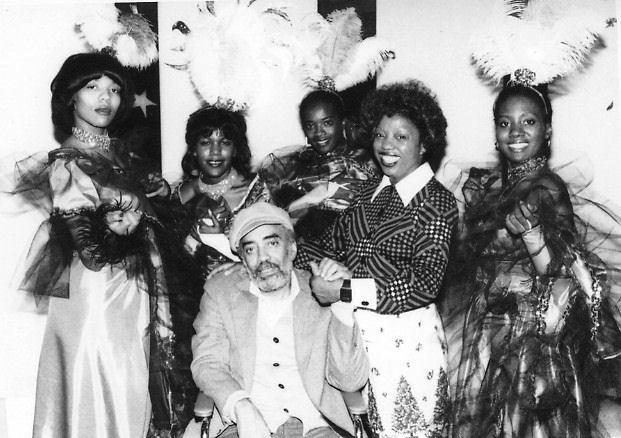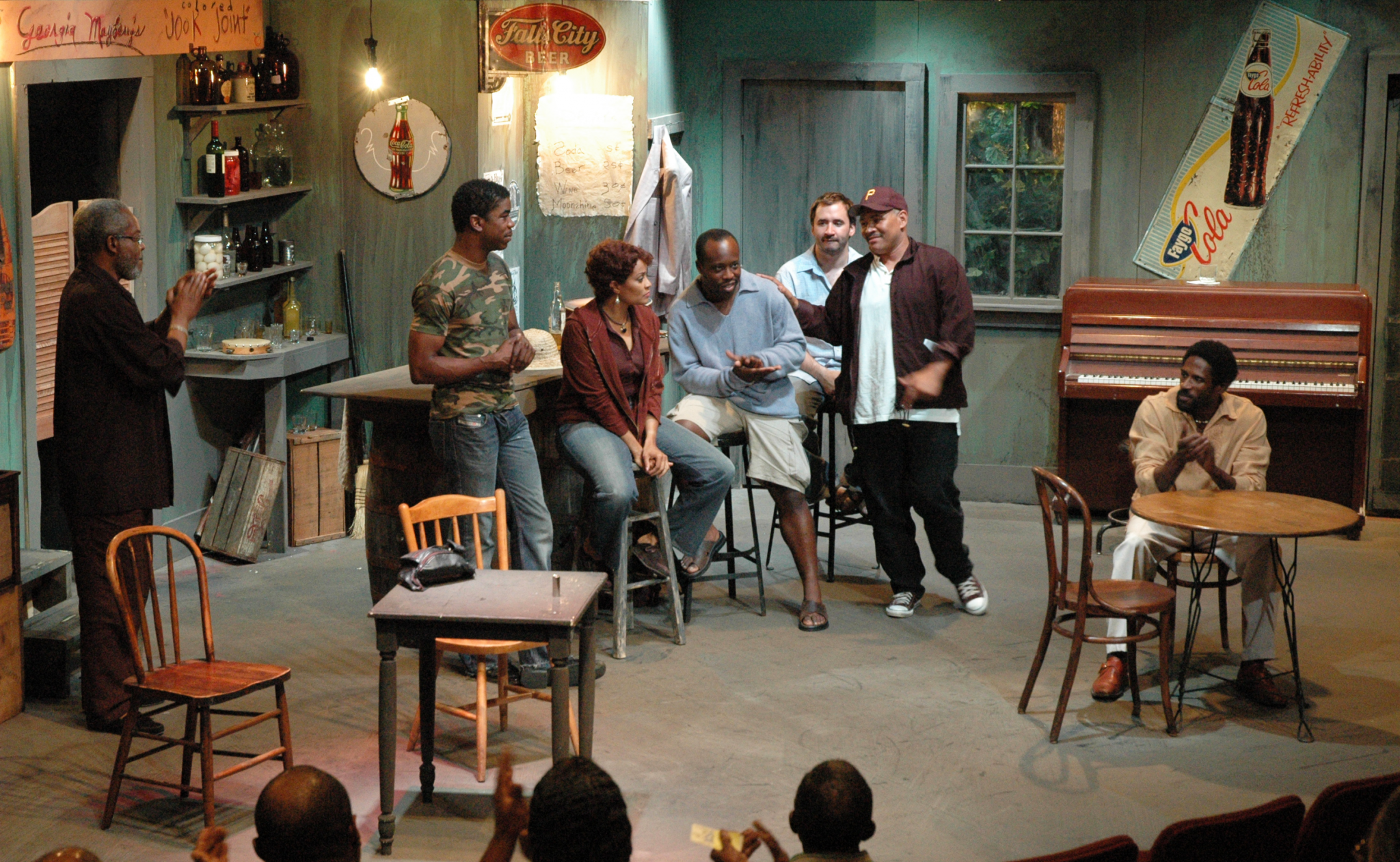Kemati Porter, executive director of the eta Creative Arts Foundation, does not hesitate to explain the challenges of renovating the cultural center at 76th Street and South Chicago Avenue. Originally a storm window factory, the sprawling site was acquired by the eta Creative Arts Foundation in the early 1980s, remodeled extensively, and opened for use in 1988.
“There comes a time in a building’s structural history where there are issues that need to be taken care of in order for it to remain viable,” she said, looking around the library where many productions’ worth of costumes were stacked and wrapped in garment bags, to be returned to the dressing rooms after construction. “We didn’t meet building codes, and we had a leaky roof. But the only option [for eta] is to go forward.”
And so, in a fashion consistent with the approach eta has taken since its founding in 1969, the theater company kept moving. With a $500,000 grant from the Illinois Department of Commerce and Economic Opportunity, eta is getting an exterior makeover, a new roof, and updated classrooms. Even after the roof above the theater caught fire in October, delaying completion of the renovations by several months, the show went on—eta’s forty-fourth season is being performed at Kennedy-King College until the South Chicago site is up and running. Actors took the stage in October to perform Christine Houston’s rendering of 1950s Bronzeville, Two Twenty-Seven, followed by Ekundayo Bandele’s If Scrooge Was a Brother in November.
This isn’t the first time that eta has staged an itinerant season. When Chicago performers Abena Joan Brown and Okoro Harold Johnson first founded the Ebony Talent Agency Creative Arts Foundation, they were without a permanent performance space. Early shows were held in various auditoriums until 1971, when the company settled into its first home at the Harris YWCA. That year, eta was incorporated as a nonprofit organization with the mission of providing opportunities for training, performance, and art exhibition on Chicago’s South Side.
Eta has since become a premier cultural resource for African-American artists, with drama, dance, and music workshops provided for patrons of all ages. Oftentimes, alumni of eta’s workshop programs go on to act in the theater’s full-stage productions, and then on to roles in the greater Chicago theater community. Most recently, eta veteran Jerod Haynes starred as Bigger Thomas in Court Theatre’s September staging of Native Son.
Porter beams with pride when discussing Haynes’s success. “He was nurtured here,” she said, smiling. “And there is no better feeling than opening up a program, reading an actor’s bio, and seeing ‘eta’ listed under their performance history.”
As Porter tells the story, Abena Brown and Okoro Johnson founded eta in the late 1960s with that very experience in mind. “There weren’t many opportunities for black performers at that time, and they were not getting work,” she said. “So instead of waiting around, [Brown and Johnson] decided to take matters into their own hands and make work for themselves.”
With the help of attorney Archie Weston and journalist Al Johnson (no relation), Johnson and Brown built eta from the ground up. Driven to provide a venue where stories of the black community could be told, they recruited volunteers, community partners, and an advisory board dedicated to finding sufficient space and funding. Before performances, Brown would regularly get onstage to address audiences and call for their support.
“She would always tell them how grateful she was for their presence, and then remind them of their obligation to themselves and to their community,” said Porter. “It was about stoking an awareness.”
Brown’s tenacity and commitment to a strong black theater community still guides eta, even in her retirement. A graduate of the University of Chicago’s Community Organization and Management Program at the School of Social Service Administration, her long tenure as president and executive director shaped the organization’s tight-knit feel.

“She was like a mom to me,” said Darryl Goodman, who has worked as eta’s technical director since the early 1970s and is now acting as the project manager on the South Chicago site renovations. “Rest Okoro’s soul, he was like a father to me too.”
Porter emphasizes that this culture of close support has been fundamental to eta’s success. “When we’re all here for workshops on Saturdays, this is a family,” she said. “We all know each other. This is a safe space, and you can take ownership of your history here.”
In choosing performances for production, eta aims to take the black community’s history into account while also speaking to audiences young and old about the experiences and issues of the present day. Sometimes, Porter says, that means pushing audiences outside of their comfort zones. When eta produced hip-hop artist Will Power’s Flow in 2011, some older patrons expressed unease with the play’s use of profanity. Porter welcomed dialogue about these concerns by talking with audience members after the show.
“Eta has always been about portraying the experiences of our community authentically,” she said. “When you’re speaking to intergenerational audiences, sometimes there’s a challenge. But we’re looking for that moment of recognition, where you see a character onstage and you say, ‘I know that person.’”
Authentically portraying experiences in the black community often includes confronting issues of race, politics, and poverty head-on, a task Porter doesn’t shy away from. “Art is political,” she said frankly. “But that doesn’t mean we discuss it every day—everyone just knows.”
The newly renovated eta is tentatively scheduled to open up to audiences and students again this spring. Michael Lewis, current Chairman of the Board of Directors expressed excitement about the prospect. “The idea is to bring the place back to its glory of years ago,” he said in a phone interview. “The community misses us, and we miss them.”
Even in the site’s current state, laden with tarps and paint buckets, with the faint sound of hammers and saws in the background, the glory of the place still feels strong. Colorful old programs are on display in glass cases in the lobby, with impressive pieces from the local art collection hung on the walls alongside a large framed photograph of Abena Joan Brown. Brown’s philosophy for eta’s success was simple, said Porter. “‘At the end of the day, do your work.’ That’s how Abena always put it.”


Great that truly informs!
I enjoyed reading the description.